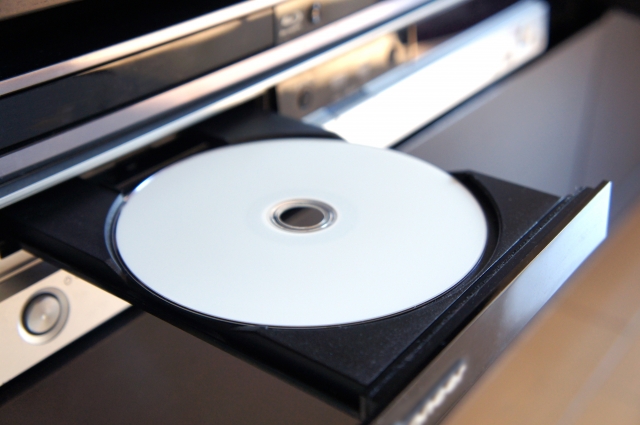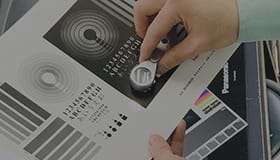Product overview
UV BUL Ink is UV curable screen printing ink designed for label printing of Blu-ray Disc. It is designed to have good adhesion to hard-to-adhere surface like metal treated layer with very little warpage of disc due to its low shrinkage.
- UV Ink

Application
- Label printing of Blu-ray DISC, printing on metal treated layer, or inorganic layer substrate
-
Automobile, Motorcycle
-
Home Appliance (IoT)
-
Smartphone, Tablet, Smart watch
-
Sensor
-
Game
-
Others
Features, Function
- Superior adhesion to metal treated layer, or inorganic layer.
- Suitable for printing on Blu-ray DISC due to extremely low shrink ink.
- Suitable for high speed printing by CD printers.
- Formed ink layer has high surface hardness and excellent abrasion and alcohol resistance.
- Low odor, low skin irritation.
- Multi color setting
Substrate
- Label of Blu-ray DISC (Printed surface should be metal treated layer or inorganic)
- Metal treated layer or inorganic substrate
Dilution
- Not required(Use RE-804 REDUCER within 5% when required)
Promoter
- UV Thixotropic agent: 2% or less(To increase viscosity)
Recommended cleaner
- Screen Cleaner L2
- Applicable for machine cleaning with less hazardous glycol ether types(Glycol ether type cleaning may not be suitable for some types of stencil emulsions, so please be sure to test it beforehand.)
Mesh
- T 350 mesh(Coverage is 50 to 60m2/kg)
Drying, Curing
- Accumulated energy: about 430mJ/cm2, Illuminance:430mW/cm2(Eye Graphics UV integral light counter)
- Approximate for disc printers: Tact speed 1.4sec, 140W/cm
Standard colors
-
000 MEDIUM
-
011 MATT BASE
-
052 YELLOW
-
162 SCARLET
-
277 OPAQUE REDDISH YELLOW
-
391 BLUE
-
525 ORANGE
-
582 MAGENTA
-
616 WHITE
-
797 GREEN
-
821 VIOLET
-
911 BLACK
Caution
- Checking adhesion before production: Adhesion may change depend on the substrates, processes, and printing. Be sure to check the adhesiveness before mass producton printing.
- Ink shelf life: 12 months from shipping date is stable.
Safety
- UN No.: Not classified in the definition
- UN Classification: Not classified in the definition
Handling
- Use safety gloves and eyeglasses to protect skin and eyes. If the ink comes in contact with skin, wash with soap and plenty of water (or lukewarm water) and consult with a doctor.
- Containers should be closed tightly after use and stored in a cool and dark place.
- SDS is available upon request. Please request a copy and read it carefully before handling the products.
Resistance
| Test item | Test Conditions | Test results |
|---|---|---|
| Adhesion | JIS K 5600-5-6(cross-cut), cellophane tape and peel | 0(no peel) |
| Hot-cold cycling | 10 cycles, -20℃(0.5 hrs)~70℃(0.5 hrs), check appearance and peel off | No defect |
| Water | Soak 30 min in tap water, check appearance and cross-cut peel off | No defect |
| Humidity | 60℃ 80%RH 96 hrs. check appearance and peel off | No defect |
| Alcohol | Abrasion tester, gauze impregnated in 80% ethanol, weight 800g, 15 back and forth (1 round speed/2 sec) | No defect |
| Detergent | 5% neutral detergent, 60℃ 24 hrs. check appearance and peel off | No defect |
| Salt Water | 5% Saline solution, 50℃ 95%RH 24 hrs., check appearance and peel off | No defect |
| Artificial Sweat | 50℃ 95%RH 24 hrs. check appearance and peel off | No defect |
| Pencil Hardness | Weight 500g, Hardness which does not make scar. | F |
| Eraser Abrasion | Eraser tester, Weight 500g, 100 back and forth, check appearance | No defect |
| Tilt Angle | 80℃ 90%RH 96 hrs. check warpage change of CD prints | Tilt angle less than 0.3 |
Test Condition
- Test condition 【140W/cm 1 Metal halide lamp, Tact speed 1.4 sec.(43pcs/min)】【T 350】【Substrate: Blu-ray DISC】
- Above resistance test results are measured results in our laboratory and they are not guaranteed values.
- Information contained in this catalog may change without prior notice.
FAQ
-
What is screen printing?
-
Screen printing is a type of stencil printing which uses a technique of duplicating the image from a design made on mesh stencils.
When printing ink goes through the mesh, it transfers the image onto the substrate material. Other than air and water, any substrate materials are printable. Not only flat surfaces, but also curved, specially shaped, and molded products are suitable for screen printing.
- Related inks

